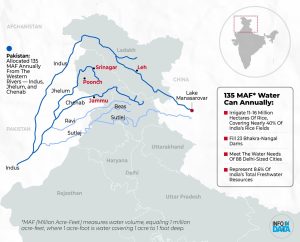The PM Dhan-Dhaanya Krishi Yojana (PMDDKY) was launched by the Government of India as a major step to revamp agriculture in India’s underperforming regions. Unveiled with a hefty investment of ₹24,000 crore over six years, this scheme is set to reimagine the way India approaches productivity, infrastructure, and livelihood generation in the agricultural sector. Let’s understand why this new initiative is being called a game-changer for Indian farmers.
🌾 What is PM Dhan-Dhaanya Krishi Yojana?
PM Dhan-Dhaanya Krishi Yojana is a flagship initiative by the Central Government that aims to transform agriculture in 100 low-performing districts through the convergence of 36 existing schemes across 11 ministries, including PM-KISAN and Pradhan Mantri Fasal Bima Yojana (PMFBY).
🎯 Objectives of PM Dhan-Dhaanya Krishi Yojana (PMDDKY)
The primary objectives of PM Dhan-Dhaanya Krishi Yojana (PMDDKY) include:
- Improving agricultural productivity in targeted districts.
- Integrating various welfare and technical support schemes under one umbrella.
- Boosting self-reliance and reducing regional disparities.
- Enhancing local livelihoods and agro-infrastructure.
- Promoting crop diversification and environmental sustainability.
🛠️ Key Features of PM Dhan-Dhaanya Krishi Yojana (PMDDKY)
🔗 Convergence of 36 Schemes
One of the most significant innovations of PM Dhan-Dhaanya Krishi Yojana (PMDDKY) is the integration of 36 existing schemes, including:
- PM-KISAN (Direct Income Support)
- PMFBY (Crop Insurance)
- Rashtriya Krishi Vikas Yojana
- National Food Security Mission, etc.
🧩 District Dhan Dhaanya Samitis
Local implementation will be overseen by District Dhan Dhaanya Samitis, responsible for customising plans based on local needs.
📊 Monthly Monitoring
The scheme involves monthly tracking of 117 indicators, ensuring robust performance analysis and timely intervention.
🤝 Public-Private Partnerships (PPP)
Encourages local partnerships with private stakeholders to ensure smooth implementation, innovation, and accountability.
📉 Context of Declining Agricultural Investment
A critical point raised by experts and reported by The Hindu is the decline in agricultural spending, dropping from 3.53% in 2021–22 to 2.51% in 2025–26 of the total plan outlay. PMDDKY attempts to counterbalance this trend through better scheme alignment and monitoring.
🌍 Why This Scheme Matters: The Bigger Picture
Modelled after the Aspirational Districts Programme, PM Dhan-Dhaanya Krishi Yojana (PMDDKY) is designed to work on a district-level micro-planning approach. This ensures:
- More customised development plans.
- Targeted efforts in resource-scarce zones.
- Enhanced coordination among central, state, and local bodies.
The convergence strategy aims to streamline overlapping schemes, cut bureaucratic delays, and maximise impact per rupee spent. The scheme is also deeply aligned with India’s food security goals, especially given recent dips in the sowing of pulses and oilseeds.
⚠️ Challenges Ahead
While PMDDKY holds great promise, several concerns need to be addressed:
- Reduced Budget Allocations: A consistent decline in agri-spending may limit the impact.
- Implementation Complexity: Merging 36 schemes across 11 ministries is a massive coordination challenge.
- Data Accuracy: Monthly tracking depends on the availability of reliable ground-level data.
- Dependence on the Private Sector: While PPPs can innovate, they may also lead to inequitable outcomes if not properly regulated.
- Capacity of Local Bodies: District-level entities like Samitis must be empowered with trained staff and sufficient autonomy.
🧠 Points to Remember
- ✅ PMDDKY is a ₹24,000 crore scheme over 6 years targeting 100 districts.
- ✅ It merges 36 schemes under 11 ministries, improving convergence and accountability.
- ✅ Inspired by the Aspirational Districts Programme for targeted planning.
- ✅ Monthly performance monitoring based on 117 indicators.
- ✅ Encourages PPP models and district-specific agro-strategies.
🔚 Conclusion
The PM Dhan-Dhaanya Krishi Yojana represents a bold step towards revitalising India’s rural economy. While its success will depend heavily on implementation and local engagement, the structural framework has the potential to bridge the long-standing productivity gaps in agriculture. By adopting a decentralised, district-led, and performance-monitored model, this scheme could well serve as the blueprint for future public policy in rural development.






[…] “What began in Mumbai has now spread across India.” — The Hindu Editorial […]